
by Angela Hinkle | Oct 28, 2018
You want to help but don’t know how? Maybe you don’t have much money and you don’t have skills, time, or transportation to get to hurricane Michael victims for clean up or rebuild. One easy, low-cost way to help is peanut butter.
Yes, peanut butter helps hurricane victims
Peanut butter tastes good. It is safe at room temperature – no need to refrigerate or heat. Great when there is no electricity. And it’s super easy. Spread on bread or nosh on a spoonful.

Nutty for Peanut Butter
Photo Source: Angela Hinkle
“I am so hungry. What are we going to eat?”
These words were repeated throughout affected areas of the Florida panhandle after the Michael disaster ripped through towns. Peanut butter was the answer for many. A great filler upper loaded with important protein.
The Peanut Butter Challenge
During the months of October and November, UF/IFAS Extension offices in the Florida panhandle are collecting peanut butter for the Peanut Butter Challenge. Peanut butter is dropped off at collection sites by gracious donors – like you. Then at the beginning of December, the peanut butter is distributed to hungry families in need at local food pantries. Because so many of our family, neighbors, and friends were affected by hurricane Michael, much of this peanut butter will also be headed to them this year.
Peanut Proud
Peanut Proud and others have already donated 36,000 jars of peanut butter to affected areas. While many jars will be “spread” throughout all Florida panhandle county pantries, much peanut butter will be distributed to hurricane Michael affected areas.
Gift Cards
Looking for other ways to help. Gift cards to Home Depot, Lowes, Ace, Walmart, etc. are greatly appreciated. These cards allow people to get what they need. No guesswork involved.
To find out how and where to donate as well additional recovery information, contact your local Northwest District UF/IFAS Extension office. University of Florida IFAS directory

by Angela Hinkle | Oct 9, 2018

Peanut Butter Challenge
Photo Source: UF/IFAS Extension Escambia
What would you do with 10,000 pounds of Peanut Butter? How about change the lives of hungry families.
What’s It All About?
The annual Peanut Butter Challenge has begun for 2018. Unopened jars of peanut butter are collected throughout the Florida Panhandle. We do this until the Tuesday before Thanksgiving at area Peanut Butter Challenge donation drop-off sites. Local peanut farmers help to match contributions. The peanut butter is then donated to local food pantries and food banks to help struggling families. Last year, the Peanut Butter Challenge collected about 9,000 pounds of peanut butter. This year, the goal is to collect 10,000 pounds of Peanut Butter. Five tons – whew, that’s a lot!
Why Is It Important?
When families are not sure where and when they will get healthy food to eat, they are considered to be food insecure. Many of these families rely on food pantries to supplement their dietary needs. Peanut butter is the most requested food in most pantries. It is loaded with protein and other good-for-you nutrients like fiber and potassium. Peanut butter is shelf stable – no need to heat or keep cold. Most people really like the taste of it. So…basically, a super food.
What is the Easiest Way for Me to Help?

Nutty for Peanut Butter
Photo Source: Angela Hinkle
Though peanut butter is very economical, (usually about $2.50 per pound), look at the sales ads. Almost every week, some place has peanut butter on sale. Better yet, look for the buy one, get one free specials. Keep one jar for yourself and donate a jar. Then take your peanut butter to the closest Peanut Butter Challenge collection site.
Where Can I Contribute or Find Out More?
To find out where to donate unopened jars of peanut butter in your area, contact your local Northwest District UF/IFAS Extension office.
Help UF/IFAS Extension and the Peanut Butter Challenge donate 10,000 pounds of peanut butter to help take a bite out of hunger for local families in need. Oh, and we’ll do the heavy lifting.
For more information on how UF/IFAS Extension faculty are working to provide food access to more people and stem this tide of hunger, read Nick Place on 2018 PBC.
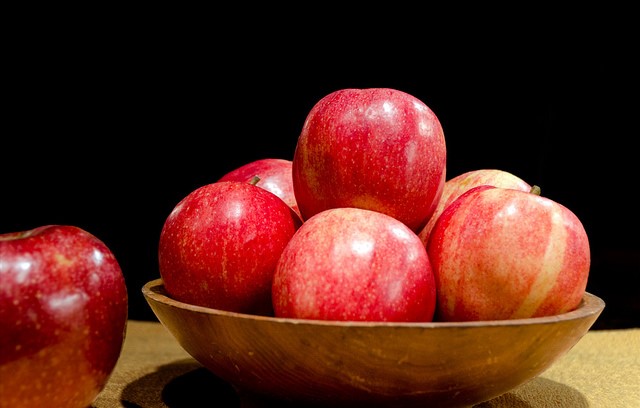
by Dorothy C. Lee | Oct 3, 2018
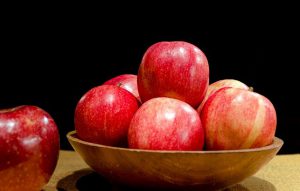
Bowl of apples
Photo source: bing
October is National Apple Month. “A” is for Apple. We have all heard this childhood saying as well as other apple idioms.
The Fall season has arrived and along with cooler weather, shorter days, and autumn leaves comes the bounty of Fall………apples.
In Autumn, apples fill farmers market and grocery store bins with seasonal shades of red, green, yellow, and russet. Popular varieties of apples grown in the United States include Mcintosh, Fuji, Red Delicious, Gala, Crispin, Honeycrisp, Granny Smiths, and Golden Delicious.
Nutrition
A large raw apple contains about 95 calories. Apples provide fiber, vitamins, and minerals. Apples are low in calories and high in antioxidants.
Selection
Each apple variety has its own distinctive flavor and texture. When purchasing apples choose a variety suitable for your intended use. Best apples for eating cooking baking The surface of the apple should be smooth, firm, unbroken, and free from bruises.
Preparation
Apples are delicious eaten raw. Simply rinse, cut into quarters and remove core from each section and slice. Use a vegetable peeler or a sharp knife to peel apples for cooking. To core apples for cooking push an apple corer through center of fruit from top to bottom, pull out core and stem. Coat peeled or sliced apples with lemon juice to prevent darkening. A bag of medium sized apples yields about 3 cups diced fruit or 2 ½ cups sliced fruit.
Cooking with Apples
Apples are the most versatile of all fruits. They are suitable for a variety of cooking techniques and can be used in a variety of recipes. Apples can be baked, grilled, poached, and even sautéed. Add diced apples to salads or dried and added to granola cereal. Sauté to accompany meat dishes and add to pancakes or waffle batter. For desserts, pair apples with a variety of cheeses.
Storage
Apples ripen faster at room temperature than in the refrigerator. Store apples in the refrigerator in a plastic bag to help retain moisture.
Celebrate the bounty of Fall with apples at their peak of flavor.
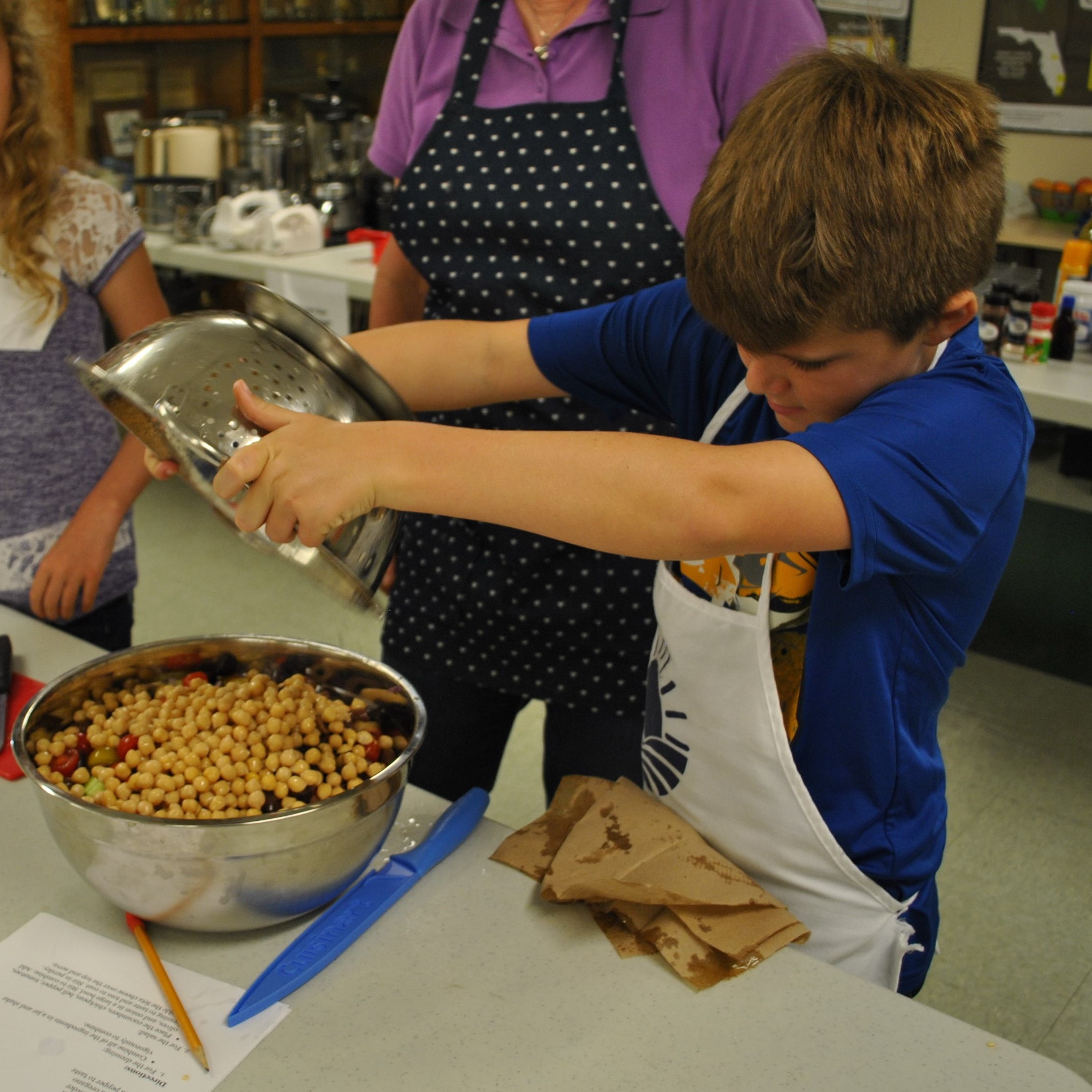
by Samantha Kennedy | Oct 3, 2018
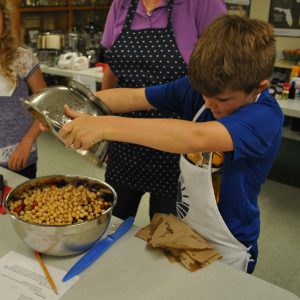
Allowing kids to help with meal prep can encourage healthy eating. (Photo source: Samantha Kennedy)
Kids and vegetables have an historically love-hate relationship. It is not clear why this came to be, but it is clear that many kids claim to dislike vegetables even when they have not even tried them.
There are many reasons children may not have tasted vegetables. Perhaps they are not provided in the home, either due to a lack of availability, lack of knowledge about preparing them, or because parents do not make the effort to expose their kids to new foods. Or maybe kids are influenced by their peers and by the media they consume, which tell them vegetables are gross.
Whatever the reason, it is important to combat this trend and encourage kids to eat more vegetables. Fresh fruits and vegetables are a vital component of healthy eating. Healthy eating, in turn, helps reduce the risk of obesity, heart disease, diabetes, and other nutrition-related aliments.
Not sure how to start getting kids to eat vegetables? Try a few simple tricks. Cutting vegetables up into bite-sized pieces and storing them in small containers or plastic bags in the refrigerator will help make them more be appealing and accessible to smaller children.
Model healthy eating behavior. Kids are more likely to eat vegetables if they see their parents eating them. If mom and dad are enjoying trying something new, children will feel more confident in trying it as well.
Set a rule that before a child can say they do not like something, they must try it first. However, do not make it punitive. Children need to approach a new vegetable on their own instead of being forced to try it. If they absolutely refuse to try it, that is fine. Offer it to them again another time and keep trying.
Negative reinforcement such as making a child stay at the table until they eat their vegetables can negatively affect a child’s eating habits. On the flip side, rewarding kids with dessert or other treats if they eat their vegetables can also have a negative effect.
Treating vegetables as a trial a child must endure to get to something better is a surefire way to increase a child’s dislike for vegetables in the future. Vegetables should be offered in a relaxed, encouraging environment. It can take 8 to 10 tries before a child is ready to taste something new. Offering vegetables in different forms – mashed potatoes vs. baked, steamed broccoli vs. raw, etc. – is also a good way to help a child try new foods.
Serving too much of something at once can be overwhelming to a child. It is important to provide small, manageable portions of foods to kids, especially when introducing something new. Do not make it mandatory to eat all of something, either. Allow the child to eat what they want and stop when they are finished.
Offering a variety of vegetables at mealtime will provide kids with a choice and increase the chance that they will eat at least one vegetable per meal. However, avoid serving the same vegetables all the time in order to encourage them to try something new.
A final way to encourage kids to eat more vegetables is to let them get involved in the selection, purchase, and preparation. Allow them to pick a vegetable at the store. Provide them with the tools and ingredients to make their own salads. If possible, let them plant a seasonal vegetable in a container and watch it grow. The more involved kids are with their food, the more positive their eating habits will be.
For more information about getting kids to eat more fruits and vegetables, please contact Samantha Kennedy, Family and Consumer Sciences Agent, at (850) 926-3931.
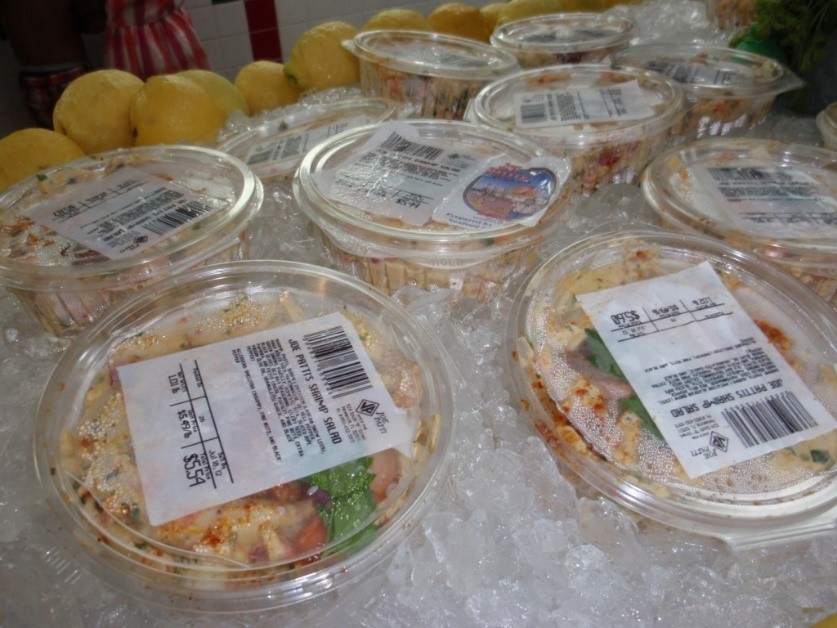
by Dorothy C. Lee | Aug 24, 2018

Photo source: UF/IFAS Northwest District
Fish and shellfish are easy to prepare and swimming with nutritive value. Fish and shellfish have become an even more important part of the diet as people turn to more healthful eating. People are choosing fish and shellfish more frequently for several reasons. It is economical, versatile, high in nutritive value, quick and easy to prepare, and it tastes good.
When purchasing fish, look for bright, clear, bulging eyes; reddish or pink gills; tight, shiny scales; firm, elastic flesh that springs back when pressed; and a pleasant saltwater-like odor.
Fish and shellfish are best if cooked the day of purchase but can be stored no more than two days in the coldest part of the refrigerator, preferably on ice. Frozen fish and shellfish should be kept solidly frozen until ready to thaw. Frozen seafood will remain fresh for four to six months. Cook seafood immediately upon thawing. Do not thaw fish at room temperature or in warm water because it loses moisture and flavor. Never refreeze uncooked fish.
Most fish and shellfish can be cooked using a variety of methods. Fish and seafood can be broiled, grilled, deep-fried, poached, steamed, baked, pan-fried, and sautéed. Care must be taken not to overcook fish or seafood. Fish are done when the flesh, pierced at its thickest point with a fork, flakes easily, and turns from translucent to opaque. Proper cooking develops flavor, softens connective tissue, and makes protein easier to digest.
Many seafood aficionados prefer flavoring their dishes with small amounts of salt, pepper, and occasionally lemon. The delicate taste of seafood blends exceptionally well with a variety of herbs, spices, and seeds, as long as these seasonings are used sparingly.
The next time you are in the neighborhood of your local seafood market, stop in. Remember that fish and shellfish from the Gulf are nutritious, economical, quick and easy to prepare, and taste great. So, enjoy local fish and seafood today!
Sunshine Fillets
2 pounds red snapper fillets or other fish fillets, fresh or frozen
2 teaspoons grated orange peel
1 teaspoon salt
3 tablespoons butter or margarine, melted
Dash nutmeg
2 tablespoons orange juice
Dash pepper
Thaw frozen fillets. Cut fillets into 6 portions. Place fish in a single layer, skin side down, in a well-greased baking dish, 12 x 8 x 2 inches. Combine remaining ingredients. Pour sauce over fish. Bake in a moderate oven, 350°F, for 20 to 25 minutes or until fish flakes easily when tested with a fork. Makes 6 servings.
Shrimp Kabobs
1 pound frozen raw, peeled, cleaned shrimp
1/3 cup butter or margarine, melted
1 teaspoon salt
2 large green peppers, cut into 1-inch squares
Dash pepper
8 slices bacon, cut into sixths
3 cans (4 ounces each) button mushrooms, drained
Thaw frozen shrimp. Alternate shrimp, bacon, mushrooms, and green pepper on 48 skewers or round toothpicks, approximately 3 inches long. Place kabobs on a well-greased broiler pan. Combine remaining ingredients. Pour half of the sauce over kabobs. Broil about 4 inches from source of heat for 5 to 7 minutes. Turn carefully and baste with remaining sauce. Broil 5 to 7 minutes longer or until shrimp are pink and tender. Makes approximately 48 hors d’oeuvres.
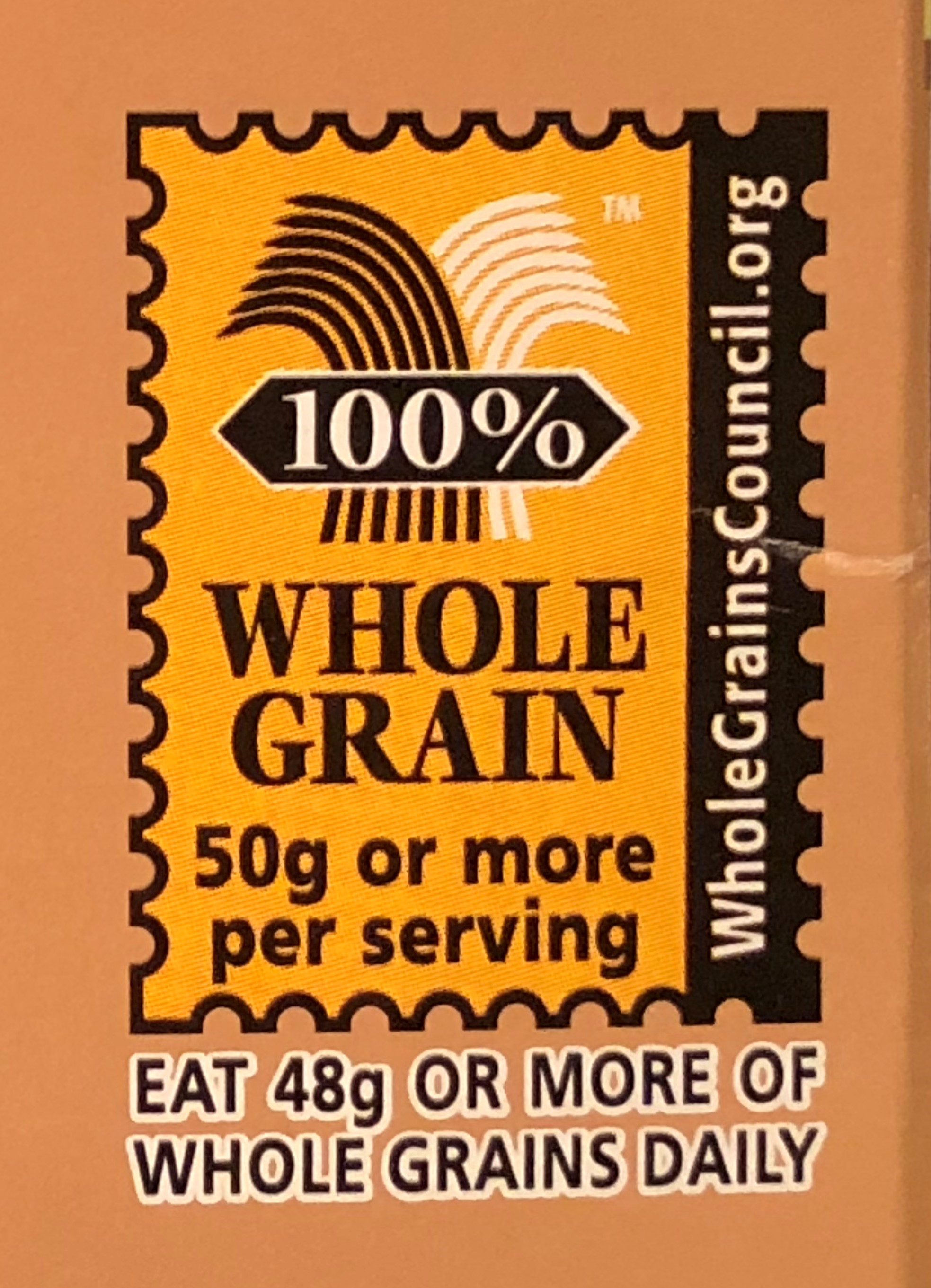
by Marie Arick | Aug 23, 2018
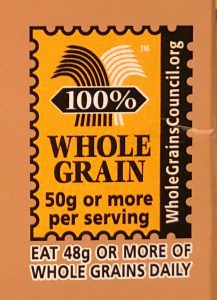
Photo credit: Marie Arick
Many Americans are more aware of whole grain food consumption as part of a healthy meal plan. In fact, the International Food Information Council’s 2015 survey found that 67% of those surveyed reported reading product labels for whole grains when shopping for packaged foods.
So, what is a whole grain? A whole grain must contain the germ, the bran, and the endosperm in the same state as it was in the field prior to harvest. Generally, most associate fiber with whole grains. In contrast, a refined grain lacks the germ and the bran that contain the fiber, B vitamins, antioxidants, and minerals. Take whole wheat, for example – it contains the trace minerals iron, zinc, copper, and magnesium, antioxidants, folate, and the following B vitamins – niacin, thiamine, and riboflavin.
Why choose whole grains? The fiber content can help to maintain a healthy weight, as it bulks once consumed, and can make one feel fuller, hence consuming fewer calories. Additionally, the fiber can aid with constipation. Other benefits of eating a diet rich in whole grains include decreasing the risk of developing type 2 diabetes, heart disease, and some forms of cancer due to the nutritional content, namely the antioxidant properties.
How much is enough? Children ideally should consume two servings minimum and adults three servings minimum each day. It is ideal for at least half of the grains you consume to be whole grains. Look for the 100% Whole Grain stamp on labels while shopping. It is a now on over 12,000 products, including cereals, breads, chips, flour, pasta, and so much more, in 58 countries.
Understanding what whole grains are and why choosing them can aid with health and well-being is important. Challenge yourself to look for the whole grain stamp and increase your daily intake, for your health.
Resources











